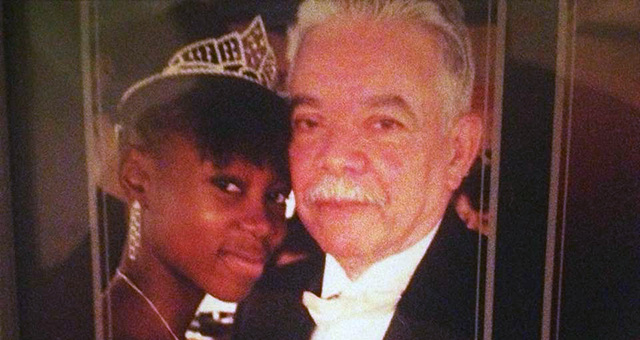Navigating a Transracial Adoption

By Emmy Pena
Transracial adoption is when a child is placed with a family from a different race. This type of adoption is controversial, with some critics questioning whether an adopted child can be introduced to a new culture while still maintaining theirs.
The proportion of adopted kindergarteners being raised by a mother of a different race or ethnic group rose by 50 percent between 1999 and 2011, according to The Changing Face of Adoption, a report by the Institute of Family Studies.
Mercedes Bueno is a psychologist in the Dominican Republic who works with the organization Consejo Nacional Para La Ninez y La Adolescencia (CONANI). She is responsible for protecting the rights of children. She explains how cross racial adoption can be very challenging, especially for older kids who already identify with their culture. “The thought of giving a child in need the opportunity for a better tomorrow is beautiful, however not as easy as it seems,” said Sanchez.
 Charlotte Lee, 26, is Dominican and Jamaican. She was raised by a Dominican and Puerto Rican family who, after having their kids, adopted her and her brother at the age of two. Her biological mother, who was dealing with drugs and alcohol, gave them up for adoption to protect them.
Charlotte Lee, 26, is Dominican and Jamaican. She was raised by a Dominican and Puerto Rican family who, after having their kids, adopted her and her brother at the age of two. Her biological mother, who was dealing with drugs and alcohol, gave them up for adoption to protect them.
Lee believes that having parents from a different ethnic group helped her become more aware of the need to be tolerant and inclusive. “I always felt a sense of family because my adoptive family always made us feel like we belong,” said Lee. “They never made us feel like we were different or excluded in any way. We are very close.”
Sometimes when parents adopt internationally, they bring a child from their birth country to another with a very different culture. It makes the transition easier if the physical appearance of both parties is similar, yet many parents that adopt from other countries return with children that look different than them. “That can cause a problem because it can bring some identity issues,” said Lee. “It’s like there’s no way that you can’t see that I’m black.”
Sanchez says that there are things that are more important for children than their cultural background. She emphasizes the importance of stability, love, and a good home. She adds that a family should respect and make the child’s birth culture a part of their new family life. Some families decorate their homes and their children’s room with pictures reflecting their race or images that help maintain the child’s self-image. Sanchez recommends that parents don’t make the difference in cultural background a factor to point out in the family.
“My family was actually very defensive about that,” says Lee. “For example, they would pay so much money for me to get my hair done because they didn’t know how to manage it,” said Lee.
Debbie Williams, 52, adopted two children from China, Kate and Jay. Kate was months old and Jay was three. “I’ve always been passionate about adoption,” said Williams. “I just think it’s a beautiful thing and a great way to spread love and inclusion.” She says it was easy at first because of how young they were, but as they grew, they started asking her questions. “Why do we look different?”, “Where am I from?”, “How did you find me?”

Williams learned about Chinese culture and traditions. Even though her family did not follow the traditions, she wanted the new additions to the family to feel welcome and connected to something from their culture.
The Multiethnic Placement Act, also known as MEPA, aims to decrease the time children wait for adoption in the United States. The law states that organizations that receive federal funds can not “categorically deny to any person the opportunity to become an adoptive or foster parent solely on the basis of the race, color, or national origin of the adoptive or foster parent, or the child involved.” However, it can be considered.
“Ever since MEPA in 1994, I started to be more drawn to this beautiful process of ethnic adoption, because I also believed that there shouldn’t be any race limitations to find kids a home,” said Williams.
Sanchez emphasizes the importance of discussing race with adopted children so that they understand that where they come from has no impact on the bond with their parents. Confront racism and make sure to listen, she advises. “Parents have to understand that they can’t protect their children forever,” said Sanchez. “Learn how to talk to them even before they face this problem.”
Make connections with other races, she says, and, most importantly, create a home environment that is full of love and welcoming to people of all backgrounds.
“Every day my husband and I learn something new about being parents and about our kids,” says Williams. “I have been able to face things such as racial discrimination and it has made me much stronger, all because and for them.”
